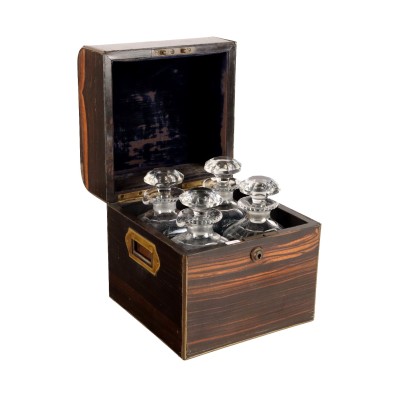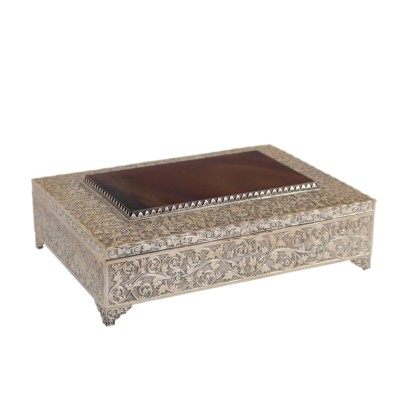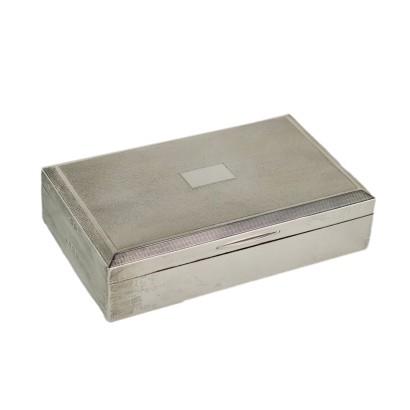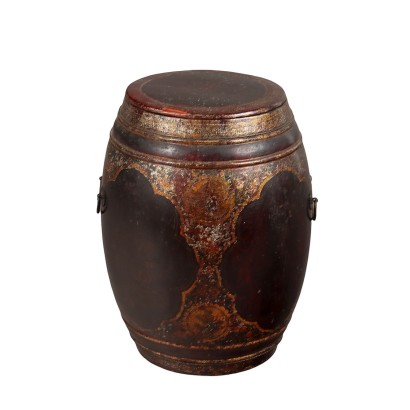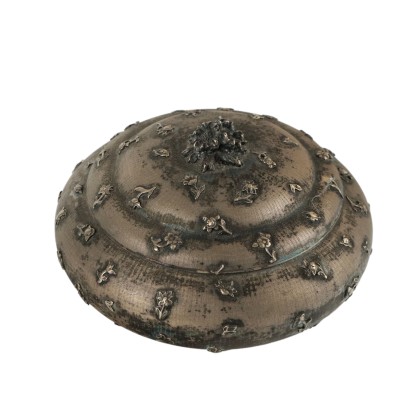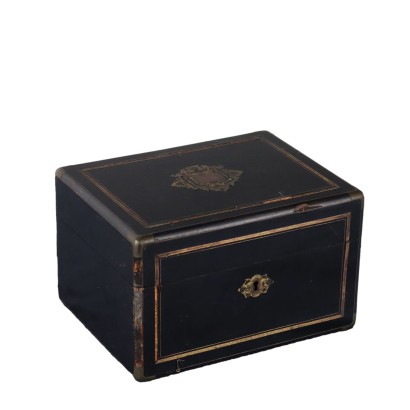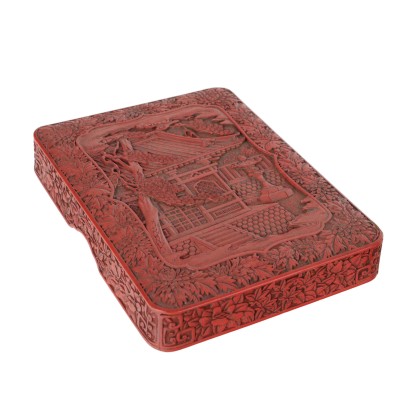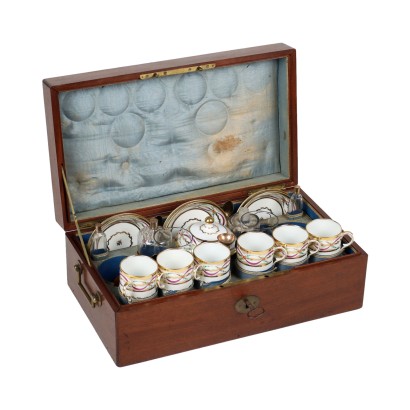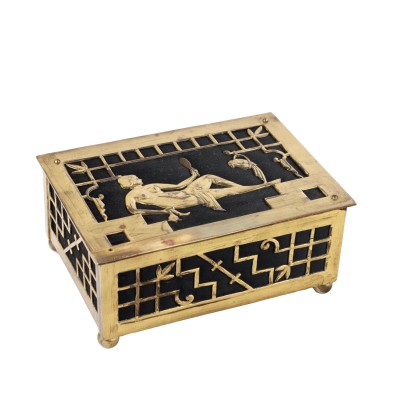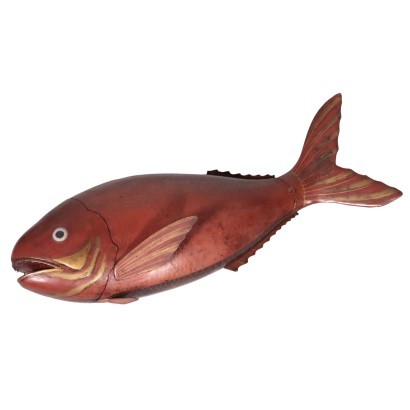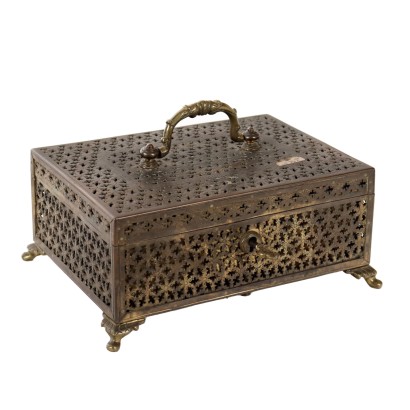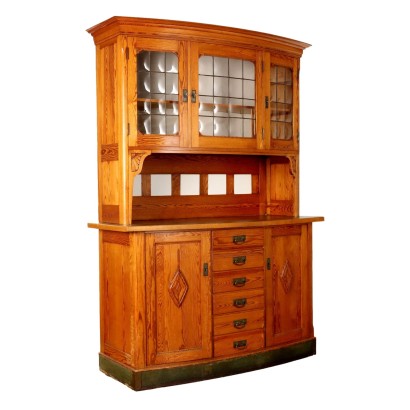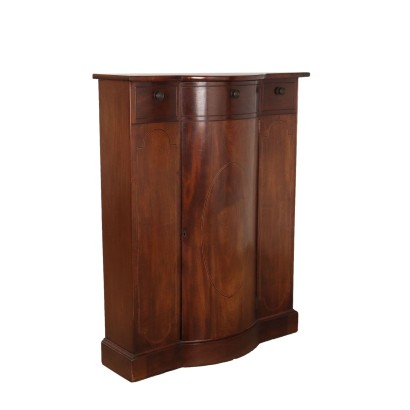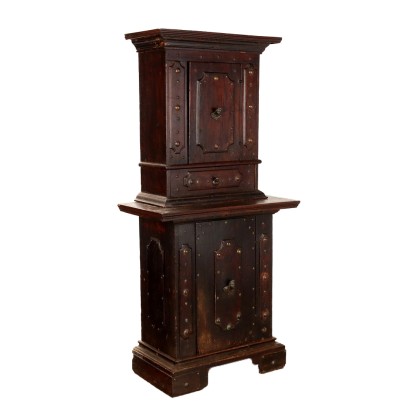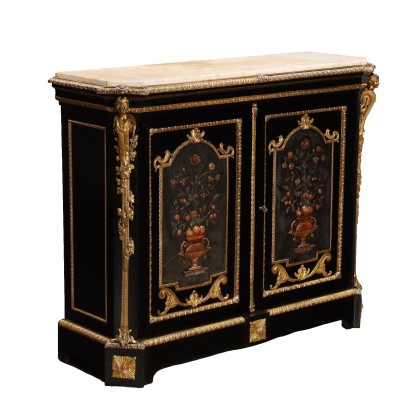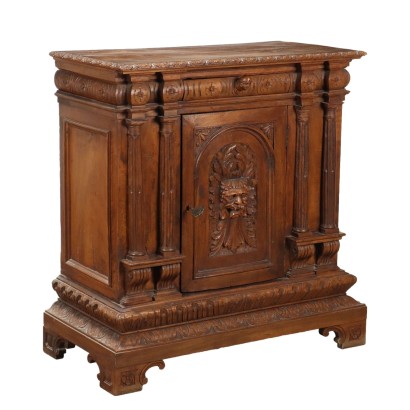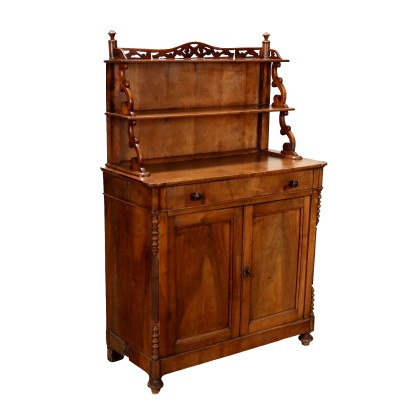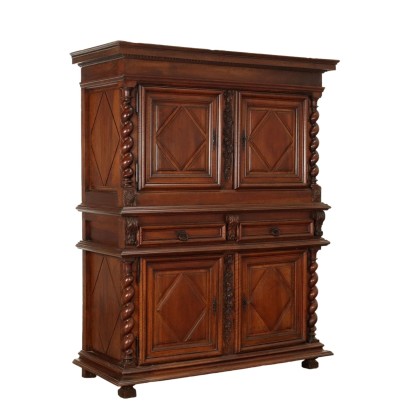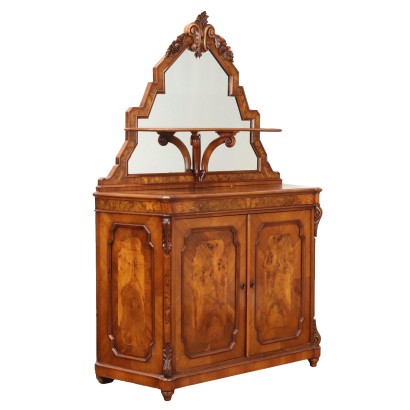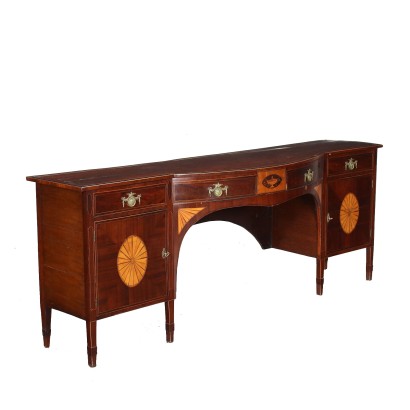Vintage Liquor Box Early 1800s Indian Walnut Brass - England Early 1800s
Features
England Early 1800s
Age: 19th Century / 1801 - 1900
Origin: England
Description
Liquor box in Indian walnut with brass handles and profiles. Coeval lock marked Bramah Patent. Colorless crystal bottles.
Product Condition:
Item in good condition, shows small signs of wear. One bottle shows two chips on the top edge. We try to present the real state of the item as fully as possible with photos. If some details are not clear from the photos, what is reported in the description will prevail.
Dimensions (cm):
Height: 25
Width: 22
Depth: 23
Maximum size (cm):
Height: 37
Additional Information
Notes historical bibliographic
Joseph Bramah (13 April 1748, Stainborough - 9 December 1814, London) was a British inventor, best remembered as the inventor of the hydraulic press and as a skilled lockmaker. Together with William George Armstrong he is considered one of the founding fathers of hydraulic engineering. After studying the technical aspects of Bramah locks he designed his own, which he patented in 1784. In the same year he set up the company "Bramah Locks" based at 124 Piccadilly; the company is now based in Marylebone and Romford, (Essex). The locks manufactured by Bramah were famous for their resistance to picking and tampering. The company is also remembered for the slogan, displayed next to the lock in the London shop window starting in 1790, which read «The craftsman who will succeed in making a tool capable of picking or opening this lock will receive 200 guineas when the job is done". This challenge remained open for over 67 years until, on the occasion of the Great Exhibition of 1851, an American blacksmith named Alfred Charles Hobbs managed to open the lock. After some discussions about the method he used to open it, he was finally awarded the prize. The ultimately successful attempt required approximately 51 hours of work, spread over 16 days. The Challenge Lock is kept in the Science Museum in London. An examination of the lock shows that it was rebuilt after Hobbs' test: in fact, originally, it had a central spring and 18 iron blocks, while in the reconstructed one there were 13 blocks each with its own spring. In 1798 he patented a new model of lock.Age: 19th Century / 1801 - 1900
19th Century / 1801 - 1900Material:
Wood
Brass
Other customers have searched:
Scatole antiche, scatola da cucito, scatola in legno, oggetti antiquariato, oggetti collezionismo, oggetti antichi, contenitore..
Se ti interessano gli oggetti d'arte e antichi Scopri qui tutte le presentazioni degli oggetti più belli, eleganti e preziosi su FineArt by Di Mano In Mano
Leggi di più
Sull'antiquariato in generale dai un'occhiata anche a:
Classic Monday: da un pezzo dei nostri magazzini alla storia dell'antiquariato
L'antiquariato dalla A alla Z: il Dizionario dell'Antiquariato
Il dizionario dell'antiquariato - Lastronatura
Il dizionario dell'antiquariato - Mascherone
Il dizionario dell'antiquariato - Natura morta
Il dizionario dell'antiquariato - Opificio
Il dizionario dell'antiquariato - Pastiglia
Il dizionario dell'antiquariato - Savonarola
Il dizionario dell'antiquariato - Rosone
Leggi di più
Sull'antiquariato in generale dai un'occhiata anche a:Classic Monday: da un pezzo dei nostri magazzini alla storia dell'antiquariato
L'antiquariato dalla A alla Z: il Dizionario dell'Antiquariato
Il dizionario dell'antiquariato - Lastronatura
Il dizionario dell'antiquariato - Mascherone
Il dizionario dell'antiquariato - Natura morta
Il dizionario dell'antiquariato - Opificio
Il dizionario dell'antiquariato - Pastiglia
Il dizionario dell'antiquariato - Savonarola
Il dizionario dell'antiquariato - Rosone
Product availability
Immediate availability
Ready for delivery within 2 working days from ordering the product.
Alternative proposals
It could also interest you



